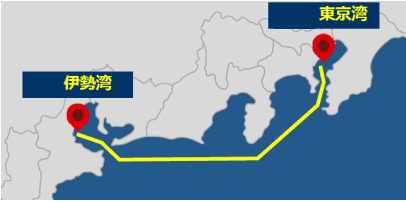2022-03-02 スイス連邦工科大学ローアン校(EPFL)
ギターのチューニングなどで弦を締めると、弦の振動が速くなる。しかし、弦がナノサイズである場合、張力を強くすると、弦の振動モードの損失も減少、つまり「希釈」される。
「散逸希釈」として知られるこの効果は、量子技術用の機械装置を開発するために利用されてきました。量子技術では、わずか数十原子層の厚さの設計された張力のかかったナノストリングが、一度だけ引き抜かれた後、100億回以上振動します。ギターに相当するものは、撥弦されてから約1年間聞こえるコードです。

Artist’s rendition of the vibration patterns of nanoscale crystalline silicon strings. Credit: Daniele Francaviglia
A team of EPFL scientists engineer nanoscale guitar strings that vibrate tens of billions of times when plucked at cryogenic temperatures, with a material originally developed for electronic transistors.
Tightening a string, e.g. when tuning a guitar, makes it vibrate faster. But when strings are nano-sized, increased tension also reduces, or ‘dilutes’, the loss of the string’s vibrational modes.
This effect, known as ‘dissipation dilution’, has been exploited to develop mechanical devices for quantum technologies, where engineered, tensioned nanostrings with a thickness of just a few tens of atomic layers oscillate more than ten billion times after being plucked just once. The equivalent on a guitar would be a chord heard for about a year after being plucked.
Researchers at EPFL, led by Professor Tobias J. Kippenberg, have now made a simple observation about crystal oscillators, which are ubiquitously used in electronic devices and are known to possess extremely small mechanical energy loss at low temperature. The researchers proved that, if a crystalline material with nanoscale thickness is stretched with high tension and retains its atomic order, it would be a good candidate for making strings with long-lived acoustic vibrations. The study is published in Nature Physics.
“We chose strained silicon films because it is an established technology in the electronics industry, where they are used to improve the performance of transistors,” says Dr Nils Engelsen, one of the paper’s authors. “Strained silicon films are therefore commercially available in extremely small thicknesses of about 10 nanometers.”
A major challenge is that the nanostrings should have extreme aspect ratios. In this paper, the nanomechanical devices are 12 nanometers-thick and up to 6 millimeters-long. If such a nanostring was built standing upright, with a foundation diameter equal to that of the Burj Khalifa tower, its tip would surpass Medium Earth Orbit, where GPS satellites circle the Earth.
“These structures become fragile and susceptible to tiny perturbations during the last steps of their microfabrication,” says Alberto Beccari, a PhD student in Kippenberg’s lab, and the paper’s first author. “We had to completely revamp our fabrication protocol to be able to suspend them without catastrophic collapse.”
The strained silicon nanostrings are particularly interesting for quantum-mechanical experiments, where their low dissipation rate provides excellent isolation from environmental disturbance, enabling the creation of high-purity quantum states.
“A long-standing quest in fundamental physics is to study and extend the size and mass scales of objects that exhibit quantum-mechanical behavior, before the ever-increasing random ‘kicks’ and fluctuations from the hot, noisy environment force them to behave according to the laws of Newton mechanics,” says Beccari. “Quantum-mechanical effects have already been observed with mechanical resonators of the same size and mass, at temperatures close to the absolute zero.
“In addition, these nanostrings could be used as precision force-sensors, being subject to all sorts of interactions – for example to the minuscule radiation pressure of light beams, to weak interactions with dark matter particles and to magnetic fields produced by subatomic particles.”
All samples were fabricatedat the Center of MicroNanoTechnology (CMi) at EPFL.
Additional contributors
- EPFL Interdisciplinary Center for Electron Microscopy (CIME)
Funding
Swiss National Science Foundation
European Union Horizon 2020
European Research Council
Defense Advanced Research Projects Agency (DARPA)
References
A. Beccari, D. A. Visani, S. A. Fedorov, M. J. Bereyhi, V. Boureau, N. J. Engelsen, T. J. Kippenberg. Strained crystalline nanomechanical resonators with ultralow dissipation. Nature Physics 28 February 2022. DOI: 10.1038/s41567-021-01498-4
Abstract
In strained mechanical resonators, the concurrence of tensile stress and geometric nonlinearity dramatically reduces dissipation. This phenomenon, called dissipation dilution, is employed in mirror suspensions of gravitational-wave interferometers and at the nanoscale, where soft clamping and strain engineering have allowed extremely high quality factors. However, these techniques have so far been applied only to amorphous materials, specifically Si3N4. Crystalline materials exhibit substantially lower intrinsic damping at cryogenic temperatures. Applying dissipation dilution engineering to strained crystalline materials could, therefore, enable extremely low loss nanomechanical resonators, as they combine low internal friction, high intrinsic strain and high yield strength. This potential has not yet been fully exploited. Here we demonstrate that single-crystal strained silicon—a material developed for high-mobility transistors—can be used to realize mechanical resonators with ultralow dissipation. We fabricate strained silicon nanostrings with high aspect ratios supporting megahertz mechanical modes with quality factors exceeding 1010 at 7 K, a tenfold improvement over values reported in Si3N4. We estimate a thermal-noise-limited force sensitivity of (5 ± 2) × 10–20 N Hz–1/2 at 7 K—approaching that of carbon nanotubes—and a heating rate of only 60 quanta per second. The low mass and high quality factors of our nanomechanical resonators make them particularly promising for quantum sensing and transduction.



